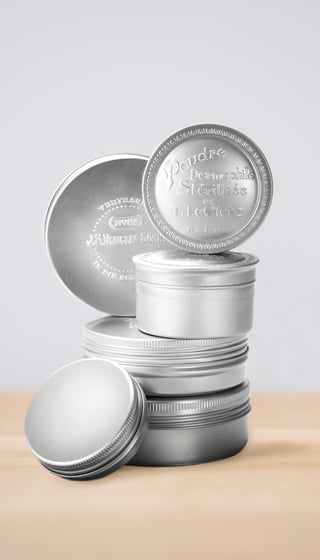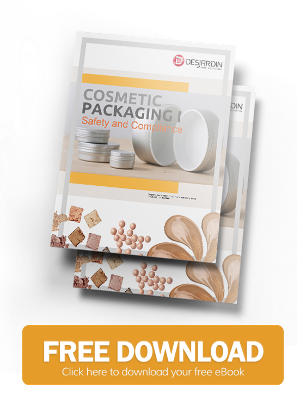The ISO 22715 is an international standard for cosmetic packaging. This post explains why marketers should follow the packaging and labelling requirements and outlines the important specifications for cosmetic containers.
Why is the ISO 22715 important
While ISO 22715 is not legally binding, it is however, the common denominator of most of the national regulations that apply to the packaging and labeling of cosmetic products. Country regulators refer to ISO standards as guidelines to best practices for the various sectors for which they apply. Often, in order to comply with a local regulation, an individual, business or manufacturer must comply with the applicable ISO standard(s).
The following sections shed light on the important points that need to be considered, when packaging cosmetics compliant to the ISO 22715.
Primary and Secondary Packaging
Information about the contents within a package need to be visible to the consumer. The outermost package is considered secondary packaging. In general, packaging must be designed to protect the product against damage and deterioration while it is stored or moved.
Required information On Packaging
- name and address of the entity responsible for marketing the product
- list of ingredients (1% or more listed first in descending order, 1% if less listed next in any order)
- function of the product
- storage conditions, except when clear in presentation

- nominal content by weight and volume at the time of packaging
- numbers that identify the product, including manufacturing date
- instructions on how to use, if appropriate
The information on the primary and secondary packaging must be positioned to be clearly visible and easy to read. It lettering must correspond with the country where the product is distributed. Certain information may only need to appear on the secondary packaging as long as it's visible to the consumer at the time of purchase.
The only time it's necessary to make sure information on how to use the product is on the primary packaging is when it may not be clear from simple instructions. Names and addresses may be abbreviated in ways that are clear what they stand for. In some cases, durability of the product should be listed.
Size and Weight
Small packages less than 15 grams or more than 10 grams need to carry certain information. It must include the name and address of the manufacturer. It must also include storage conditions, if appropriate, in weight or volume. In some cases, units may be used, if justified. Precautions, warnings and instructions must also be listed, if appropriate. This information, except for function of the product (which can be listed only on secondary packaging), must be listed on the primary and secondary packaging.
Packages that weigh 10 grams and under do not need this information. Other exceptions are when labelling is impracticable due to small size. In such cases the information must be included on an attachment, such as a tag or leaflet. Single packs may also meet this standard.
Product Use
 Some products, due to being on the market for decades, do not require much explanation on how to use it. In cases where misuse can cause harm to the consumer, however, information must be stated on packaging. It should also give instructions on steps to take if by chance the product is misused.
Some products, due to being on the market for decades, do not require much explanation on how to use it. In cases where misuse can cause harm to the consumer, however, information must be stated on packaging. It should also give instructions on steps to take if by chance the product is misused.
New products that are not widely known need clear instructions that eliminate confusion. The marketer must alert consumers about any possible risks a product may present.
Conclusion
Cosmetic manufacturers and marketers must have a clear and thorough understanding of international standards set in ISO 22715 as a first step towards compliance with national regulations. In many cases, product information must be legible and clearly displayed on both primary and second packaging, although there are certain exceptions. In general, labels must identify the ingredients of the product and where the company is based.
The purpose of setting these standards is to make sure products are safe before they appear on the market. Product labels must also conform to standards that make it clear how to contact the marketer if someone has an issue with the product. It should also be obvious for the labelling what constitutes normal use.
Disclaimer:
The postings in this blog section do not necessarily represent Desjardin's positions, strategies or opinions.
References and Further Reading
- More posts on Cosmetic Packaging, by Alex Cosper and Dawn M. Turner
- Is It a Cosmetic, a Drug, or Both? (2016), by the U.S. Food and Drug Administration
- Regulation (EC) No ´1223/2009 on Cosmetic Products (2009), The European Parliament the the European Council
- ISO 22715:2006: Cosmetics -- Packaging and labelling (2006), International Organization for Standardization







